Staying Safe While Exploring Ancient Ruins
Exploring ancient ruins is like stepping into a time machine, where every stone whispers tales of the past. However, as thrilling as it may be, it’s essential to prioritize your safety while embarking on these adventures. Ancient sites can be breathtakingly beautiful, but they also come with their own set of challenges and risks. To ensure that your exploration is both enjoyable and secure, it’s crucial to equip yourself with the right knowledge and tools. In this article, we will dive into essential tips and guidelines that will help you navigate the world of ancient ruins safely while respecting their cultural significance.
When you think about ancient ruins, you might envision crumbling walls, majestic columns, and stunning landscapes. But lurking behind that beauty are various risks that can turn a dream trip into a nightmare. From unstable structures that could collapse at any moment to environmental hazards like sharp rocks or venomous creatures, being aware of these potential dangers is the first step in ensuring a safe adventure. Imagine walking through a magnificent site only to trip on loose stones or get caught in a sudden rainstorm—preparation is key! Understanding the risks not only helps you avoid accidents but also allows you to appreciate the historical significance of the site without feeling anxious.
Proper preparation and planning can make all the difference between a safe adventure and a regrettable experience. Before you set foot on ancient grounds, take the time to research the site thoroughly. This means looking into the history, layout, and any specific challenges that may arise. Knowing the ins and outs of the ruins can help you navigate safely and enrich your experience. For instance, if you’re aware of certain areas that are off-limits or particularly fragile, you can avoid them and help preserve the site for future visitors.
Before embarking on your journey, familiarizing yourself with the history and layout of the ruins is crucial. This not only helps you navigate safely but also enhances your experience by allowing you to appreciate the stories behind the stones. Imagine walking through a site while knowing the tales of ancient civilizations that once thrived there. It’s like being part of a living history book! Take advantage of online resources, guidebooks, and documentaries that can give you a clearer picture of what to expect.
Every ancient site has its own set of guidelines designed to protect both visitors and the ruins themselves. Following these regulations is not just a matter of courtesy; it's vital for your safety and the preservation of these historical treasures. Ignoring signs or barriers can lead to accidents, and it can also contribute to the degradation of the site. Always remember, respecting these rules not only keeps you safe but also shows appreciation for the cultural heritage you are exploring.
Weather can play a significant role in your exploration experience. A sunny day can quickly turn into a stormy one, so it’s essential to check the forecast before you head out. Understanding seasonal changes and potential weather hazards will help you plan your visit accordingly. For example, if you’re exploring a site during the rainy season, be prepared for slippery paths and sudden downpours. Packing a lightweight rain jacket or checking for shaded areas can make your adventure much more enjoyable.
Packing the right gear is vital for your safety while exploring ancient ruins. Think of it as equipping yourself for an expedition! Essential supplies include:
- Sturdy Footwear: Comfortable, durable shoes can prevent slips and falls on uneven terrain.
- Hydration Packs: Staying hydrated is crucial, especially in warm climates.
- First-Aid Kits: Accidents happen, so be prepared to handle minor injuries.
By bringing the right gear, you can navigate the terrain more effectively and respond to emergencies, ensuring that your exploration remains a positive experience.
As you explore ancient ruins, it’s vital to respect their cultural significance. These sites are not just remnants of the past; they are sacred places that hold immense value to local communities. Understanding local customs and practices can enhance your experience and ensure you remain a considerate visitor. Think of yourself as a guest in a historical home; you wouldn’t want to disrupt the peace or disrespect the heritage!
Hiring local guides can significantly enhance your understanding of the ruins while ensuring your safety. Local guides are treasure troves of knowledge, providing valuable insights that you might not find in guidebooks. They know the ins and outs of the site and can help you navigate potentially dangerous areas, making your exploration both enriching and secure. Plus, it’s a great way to support the local economy!
Adhering to ethical practices while exploring ancient ruins helps preserve these sites for future generations. Avoiding vandalism, staying on marked paths, and respecting local customs contribute to a safer and more responsible exploration experience. Remember, every scratch on a wall or piece of litter left behind can affect the site’s integrity. Think of it this way: if you wouldn’t do it in your own home, don’t do it here!
Q: What should I wear when exploring ancient ruins?
A: Wear comfortable, sturdy footwear and dress in layers to accommodate changing weather conditions. A hat and sunscreen are also advisable for sun protection.
Q: Are there any restrictions when visiting ancient ruins?
A: Many ancient sites have specific guidelines, such as areas that are off-limits or rules against touching certain artifacts. Always check local regulations before your visit.
Q: How can I ensure I’m being respectful while exploring?
A: Educate yourself about the site's history and local customs, follow ethical practices, and avoid any actions that could harm the site or disturb its cultural significance.

Understanding the Risks
Exploring ancient ruins is like stepping into a time machine, where every stone tells a story and every shadow holds a secret. However, just like any adventure, it comes with its share of risks. From unstable structures that could crumble at a moment's notice to environmental hazards lurking in the shadows, understanding these risks is crucial for ensuring a safe and enjoyable journey. Imagine you’re walking through a majestic temple, the sun casting long shadows on the ground, when suddenly you hear a rumble—it's not just your stomach! That’s why awareness is your best ally.
One of the most significant risks when exploring these historical sites is the condition of the ruins themselves. Many ancient structures have weathered centuries, and their integrity can be compromised. Loose stones, crumbling walls, and uneven surfaces can pose serious dangers, especially if you're not paying attention. A single misstep could turn a fascinating exploration into a painful mishap. Always keep your eyes peeled and tread carefully; it’s like dancing on a tightrope, where one wrong move could lead to disaster.
Additionally, the environmental conditions can be just as perilous. Depending on the location, you might encounter extreme temperatures, sudden rainstorms, or even wildlife. For example, if you’re exploring ruins in a desert, the heat can be unforgiving, leading to dehydration or heat exhaustion. On the flip side, if you're in a tropical area, sudden rain can make paths slippery and treacherous. It’s essential to stay informed about the weather and prepare accordingly. Remember, the elements are not just background noise; they can be the silent saboteurs of your adventure!
To help you navigate these risks effectively, here are some key considerations:
- Structural Integrity: Always assess the stability of the ruins before venturing too close. Look for signs of crumbling walls or loose stones.
- Environmental Hazards: Be aware of the local climate and prepare for sudden changes. Bring appropriate gear for rain, sun, or cold.
- Wildlife Awareness: Depending on the region, be cautious of local wildlife that may inhabit the ruins or surrounding areas.
By being aware of these risks and taking proactive measures, you can significantly enhance your safety while exploring ancient ruins. Just like a seasoned explorer, equip yourself with knowledge and caution, and you’ll transform potential dangers into mere footnotes in your adventure story. So, gear up, stay alert, and let the wonders of history unfold before you—safely!
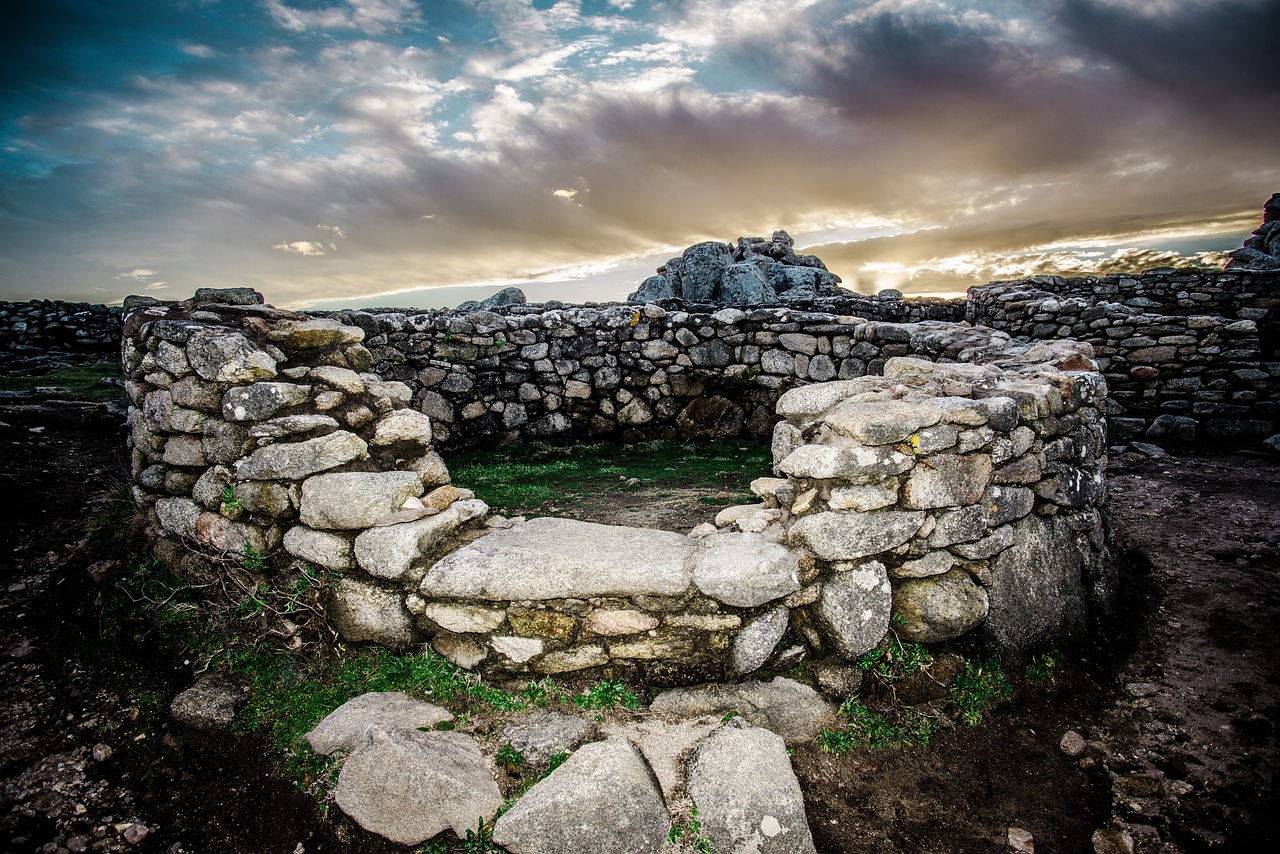
Preparation and Planning
When it comes to exploring ancient ruins, proper preparation and planning can make the difference between a memorable adventure and a regrettable experience. Before you pack your bags and set out on your journey, take a moment to consider what you need to ensure your safety and enjoyment while immersing yourself in history. Researching the site is not just a recommendation; it's an essential step that can significantly enhance your understanding and appreciation of the ruins you are about to explore.
Start by diving into the rich history of the site. Understanding the cultural significance and the stories behind the ruins can transform your visit from a simple sightseeing trip into a deep, enriching experience. Imagine walking through ancient corridors, knowing the tales of the people who once inhabited those spaces. This knowledge not only provides context but also helps you navigate the site more safely. For instance, some areas might be more unstable than others, and knowing where to tread carefully can prevent accidents.
Before embarking on your journey, it's crucial to familiarize yourself with the layout of the ruins. Many ancient sites have maps available online or at visitor centers, which can guide you through the key areas of interest. Additionally, consider reading travel blogs or watching documentaries that provide insights into the site. This preparation can prevent you from wandering into restricted or dangerous areas.
Every ancient site has its own set of guidelines and regulations designed to protect both visitors and the ruins themselves. These rules often include restrictions on climbing, touching artifacts, or straying from designated paths. It's essential to familiarize yourself with these regulations before your visit. Not only does this respect the site, but it also ensures your safety. For example, some areas may be prone to rockfalls or have unstable ground, and adhering to the guidelines can keep you safe from potential hazards.
Weather can play a significant role in your exploration experience. Understanding the seasonal changes and potential weather hazards is crucial. For instance, if you're planning to visit during the rainy season, be prepared for slippery paths and possible flooding. On the other hand, if you're venturing out in the heat of summer, ensure you stay hydrated and protect yourself from sunburn. Always check the weather forecast before your visit and pack accordingly. A simple weather check can save you from an unpleasant surprise!
Packing the right gear is vital for your safety and comfort. Here’s a quick list of essential supplies you should consider bringing:
- Sturdy Footwear: Ensure you have appropriate shoes that provide good grip and support for uneven terrain.
- Hydration Packs: Staying hydrated is key, especially in hot climates.
- First-Aid Kits: Accidents can happen, so be prepared to handle minor injuries.
- Sun Protection: Sunscreen, hats, and sunglasses can protect you from harmful UV rays.
By ensuring you have the right gear, you’ll be able to navigate the terrain more effectively and respond to emergencies if they arise. Remember, your safety is paramount, and being well-prepared allows you to focus on enjoying the stunning beauty and history of the ancient ruins.
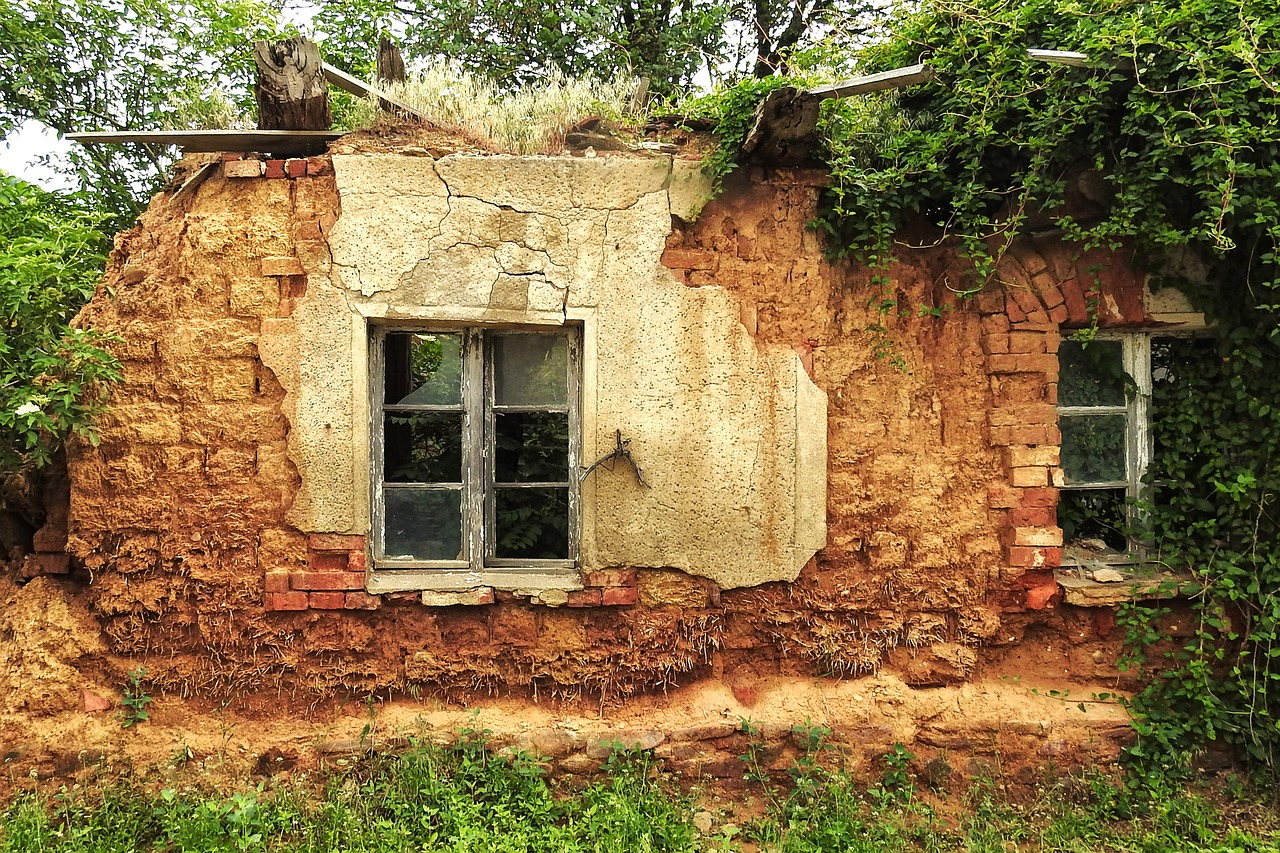
Researching the Site
Before you lace up your hiking boots and set off on an adventure through ancient ruins, it's essential to do your homework. Researching the site you plan to explore is like reading the first chapter of a thrilling novel; it sets the stage for what’s to come and prepares you for the journey ahead. Understanding the history, layout, and significance of the ruins can not only enhance your appreciation but also ensure your safety. Imagine walking through a crumbling temple, knowing the stories of the people who once walked those same paths; it transforms your experience from mere sightseeing to a meaningful connection with the past.
One of the first steps in your research is to look into the historical context of the ruins. What civilization built them? What were their cultural practices? This knowledge can provide insights into the architectural features you’ll encounter, making your visit more engaging. For instance, if you're exploring the ancient city of Pompeii, knowing about the volcanic eruption that preserved the city can give you a deeper understanding of what you’re witnessing.
Next, familiarize yourself with the layout of the site. Many ancient ruins can be vast and complex, often featuring multiple structures, pathways, and sometimes even hidden corners that are easy to miss. A detailed map or guidebook can be invaluable. Some sites even offer digital maps or apps that can help you navigate effectively. Knowing where to go and what to look for can help prevent you from wandering into unsafe areas or missing out on significant landmarks.
Moreover, it’s crucial to stay updated on the current conditions of the site. Some ruins may undergo restoration, and certain areas might be closed to the public for safety reasons. Checking the official website or local tourism boards can provide you with the latest information. This can save you time and disappointment, ensuring that your exploration is both enjoyable and safe.
Additionally, consider the environmental conditions that may affect your visit. Are there any specific challenges related to the terrain? For example, some ruins are located in mountainous regions or near bodies of water, which may present unique hazards. Researching the climate of the area can also help you prepare for sudden weather changes. Knowledge is power, and being informed can mean the difference between a delightful experience and a dangerous one.
Lastly, don’t underestimate the value of reading reviews and experiences shared by fellow travelers. Websites, forums, and social media platforms can provide firsthand accounts of what to expect. These insights can alert you to potential hazards or recommend the best times to visit, making your adventure much smoother. Remember, the goal is to immerse yourself in the beauty and history of these ancient sites while ensuring your safety and enjoyment.
- What should I research before visiting ancient ruins?
Look into the history, layout, current conditions, and environmental factors of the site. - How can I find reliable information about ancient ruins?
Check official websites, local tourism boards, and traveler reviews for the most accurate and up-to-date information. - Are there any specific safety precautions I should take?
Be aware of unstable structures, weather conditions, and follow local guidelines to ensure a safe visit.

Local Guidelines and Regulations
When exploring ancient ruins, it's imperative to be aware of and adhere to . These rules are established not only to ensure the safety of visitors but also to preserve the integrity of these historical sites for future generations. Each site may have its own set of regulations, which can vary significantly from one location to another. Ignoring these guidelines can lead to both personal injury and the degradation of these precious cultural landmarks.
For instance, some ruins may have restricted areas that are off-limits to the public due to structural instability or ongoing restoration work. Entering these areas can pose significant risks, such as falling debris or getting lost. To avoid such situations, it is advisable to familiarize yourself with any posted signage and to engage with local authorities or guides who can provide detailed information about safe zones and areas to avoid.
Additionally, many sites have rules regarding photography and the use of drones. While you may be eager to capture stunning images of the ruins, some locations prohibit photography to protect the site from potential damage or to respect the cultural sensitivities of the local community. Always check for signs indicating whether photography is allowed and respect any restrictions in place.
Another critical aspect of local regulations often pertains to the environmental impact of your visit. Many ancient ruins are situated in delicate ecosystems, and visitors are expected to follow guidelines that minimize their footprint. This might include staying on designated paths to prevent erosion, not picking plants, or avoiding littering. By adhering to these practices, you contribute to the conservation of the site and its surrounding environment.
In summary, understanding and respecting local guidelines and regulations is a vital part of your journey through ancient ruins. Not only does it enhance your safety, but it also ensures that these magnificent sites remain intact for others to enjoy. Always take the time to research the specific rules of each location before your visit, and consider engaging with local guides who can provide invaluable insights and ensure that your exploration is both safe and respectful.
- What should I do if I see someone violating local regulations at a ruin? It's best to report the incident to local authorities or site management to ensure the preservation of the site.
- Are there any specific items I should avoid bringing to ancient ruins? Yes, items like large bags, drones, or anything that could potentially damage the site or disturb wildlife should be avoided.
- How can I find out more about the regulations for a specific site? Check the official website of the site or contact local tourism offices for detailed information.
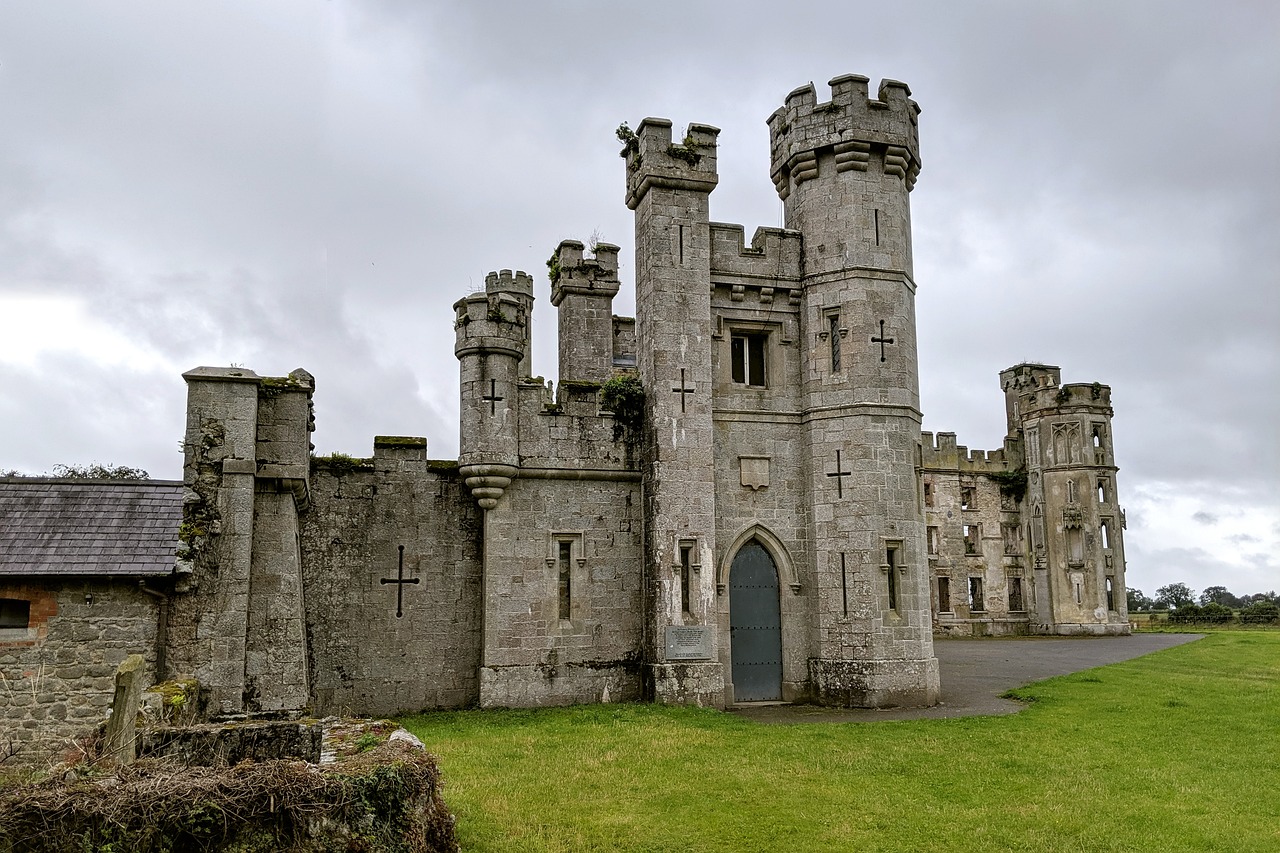
Weather Considerations
When exploring ancient ruins, play a crucial role in ensuring your safety and enjoyment. Imagine setting off on a grand adventure only to be thwarted by unexpected rain or scorching heat! Understanding the seasonal changes and potential weather hazards is like having a trusty map that guides you through the unpredictable terrain of nature. Before you embark on your journey, take a moment to check the weather forecast for the area you plan to visit. This simple step can help you avoid being caught in a storm or facing extreme temperatures.
It's not just about knowing whether to pack an umbrella or sunscreen; it's about being prepared for the unique challenges that different weather conditions present. For example, if you're exploring ruins in a tropical region, sudden downpours can turn paths into slippery mudslides. On the other hand, visiting in the peak of summer might expose you to the risk of heat exhaustion. To help you navigate these challenges, consider the following:
- Dress Appropriately: Wear lightweight, breathable clothing that protects you from the sun while allowing for airflow. If you're visiting during the rainy season, a waterproof jacket can be a lifesaver.
- Hydration is Key: Always carry a hydration pack or water bottle. Dehydration can sneak up on you, especially in hot climates.
- Timing Your Visit: Early mornings or late afternoons are often the best times to explore, avoiding the harsh midday sun and potential thunderstorms that can roll in later in the day.
Additionally, be mindful of how weather conditions can affect the stability of the ruins themselves. Rain can cause erosion, making certain areas more dangerous to traverse. Similarly, extreme heat can lead to cracks in ancient structures, so always stay aware of your surroundings. If you notice any signs of instability, such as crumbling walls or loose stones, it's best to steer clear and report your observations to the local authorities.
Remember, being informed about the weather not only enhances your safety but also enriches your overall experience. Picture this: you're standing in front of a magnificent ancient temple, the sun setting behind it, casting a golden glow across the ruins. This breathtaking moment is made possible by your careful planning and awareness of the weather. So, before you set foot on your next adventure, take a moment to consider the skies above and the path ahead!
Q1: What should I do if the weather changes suddenly while I'm exploring ancient ruins?
A sudden change in weather can be alarming, but staying calm is essential. Seek shelter if necessary, and always have a plan for such situations. If you're caught in a storm, find a safe place to wait it out, and avoid staying near unstable structures.
Q2: How can I find out about the typical weather patterns for a specific ancient ruin?
Research online or consult local tourism websites for historical weather data. Many travel blogs and forums also share personal experiences that can help you gauge what to expect during different seasons.
Q3: Is it safe to explore ancient ruins during the rainy season?
While it can be safe, it's crucial to be cautious. Rain can make paths slippery and increase the risk of landslides. If you choose to explore during this time, ensure you have appropriate footwear and gear, and stay alert to changing conditions.
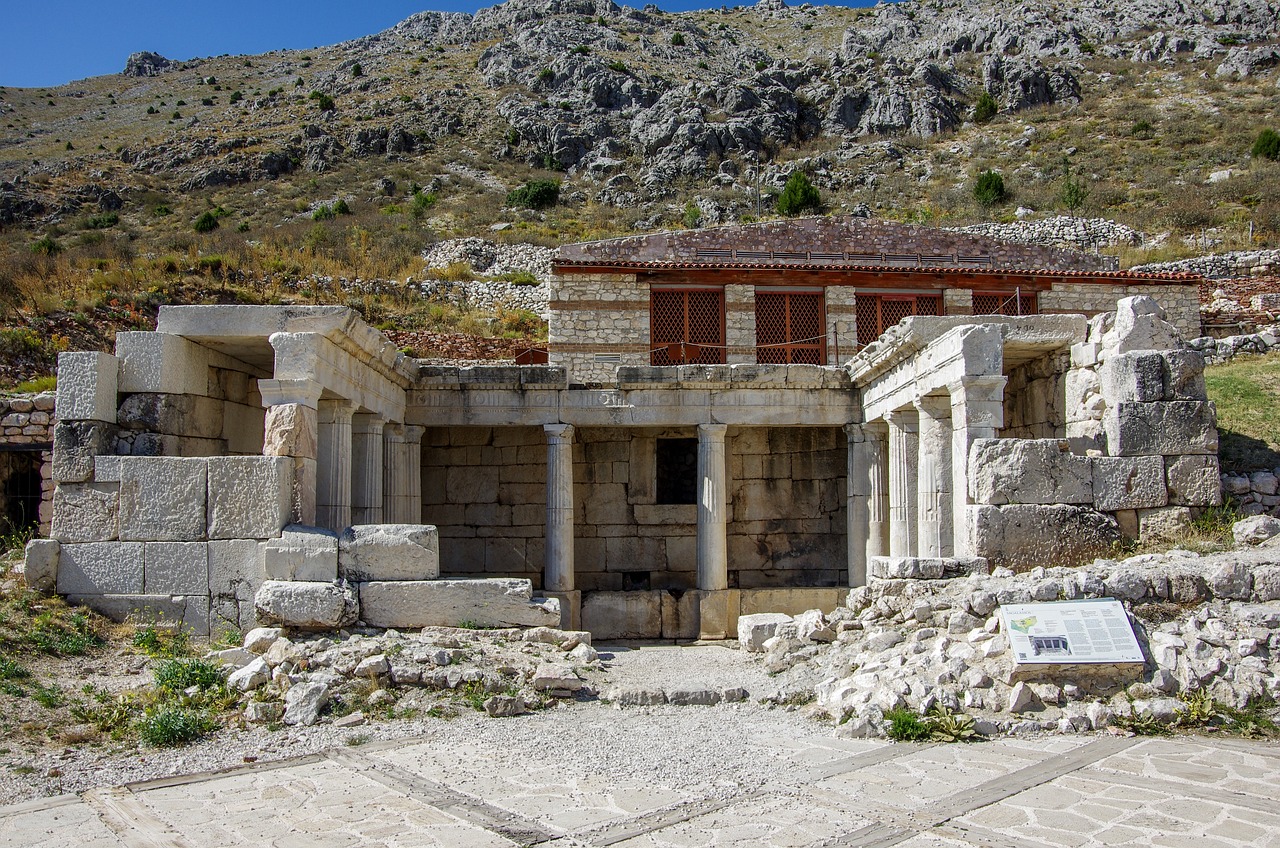
Essential Gear and Supplies
This article provides essential tips and guidelines for ensuring safety while exploring ancient ruins, focusing on physical, environmental, and cultural considerations to enhance your experience without compromising your well-being.
Exploring ancient ruins can pose various risks, from unstable structures to environmental hazards. Understanding these risks is the first step toward ensuring a safe and enjoyable adventure in historically significant locations.
Proper preparation and planning are crucial for a safe exploration. Researching the site, understanding local regulations, and preparing necessary gear can significantly enhance your safety while visiting ancient ruins.
Before embarking on your journey, researching the history and layout of the ruins helps you navigate safely. Familiarizing yourself with the area can prevent accidents and enrich your experience.
Every ancient site has specific guidelines to protect both visitors and the ruins. Following these regulations is essential for your safety and the preservation of these historical treasures.
Weather can significantly impact your exploration. Understanding seasonal changes and potential weather hazards will help you plan your visit and ensure a safer experience in ancient environments.
Packing the right gear is vital for safety when exploring ancient ruins. Just like a knight wouldn’t head into battle without their armor, you shouldn’t venture into potentially hazardous sites unprepared. Essential supplies include sturdy footwear, hydration packs, and first-aid kits, which can help you navigate the terrain and respond to emergencies effectively.
Sturdy footwear is your first line of defense against uneven ground and rocky paths. Think of your shoes as your best friends on this adventure; they should be comfortable, durable, and suitable for rugged terrain. Additionally, a hydration pack is crucial, especially if you're exploring in warmer climates. Staying hydrated keeps your energy levels up and helps you avoid heat-related illnesses. Imagine hiking through the ruins, and suddenly, you feel parched—having water on hand can make all the difference!
Moreover, a well-stocked first-aid kit is a must-have item. Accidents can happen, and being prepared can turn a minor scrape into a mere inconvenience. Your kit should include:
- Adhesive bandages
- Antiseptic wipes
- Gauze and tape
- Advil or similar pain relievers
- Any personal medications
Lastly, consider bringing a portable phone charger. You might find yourself in awe of the breathtaking views and lose track of time, but your phone is your lifeline for navigation and safety. So, keep it charged and ready for action!
Respecting the cultural significance of ancient ruins is crucial for both safety and preservation. Understanding local customs and practices can enhance your experience and ensure you remain a considerate visitor.
Hiring local guides can enhance your understanding of the ruins while ensuring safety. They provide valuable insights and help navigate potentially dangerous areas, making your exploration more enriching and secure.
Adhering to ethical practices while exploring ancient ruins helps preserve these sites for future generations. Avoiding vandalism and respecting the local culture contributes to a safer and more responsible exploration experience.
Q: What should I wear when exploring ancient ruins?
A: Wear sturdy footwear suitable for uneven terrain, and consider breathable clothing to stay comfortable in various weather conditions.
Q: Is it safe to explore ancient ruins alone?
A: While some ruins are safe to explore solo, it’s often better to go with a group or hire a local guide for safety and better insights.
Q: How can I ensure I respect the cultural significance of the site?
A: Research local customs, follow guidelines, and avoid touching or climbing on the ruins whenever possible.

Respecting Cultural Heritage
When you step into the world of ancient ruins, you’re not just walking through crumbling stones and faded carvings; you’re treading on the rich tapestry of human history. It's vital to recognize that these sites are not merely tourist attractions but sacred remnants of past civilizations. Respecting cultural heritage means acknowledging the stories, traditions, and values embedded in these locations. By doing so, you not only enhance your own experience but also contribute to the preservation of these remarkable sites for future generations.
One of the most important aspects of respecting cultural heritage is understanding the local customs and traditions associated with the ruins. Each site has its own set of cultural significances, rituals, and practices that have been passed down over centuries. For instance, in some cultures, there may be specific times when visiting is considered sacred, or certain areas that are off-limits to tourists. Being aware of these nuances can transform your visit from a mere sightseeing trip into a meaningful encounter with history. Remember, it’s about appreciating the culture, not just observing it.
Moreover, engaging with local communities can greatly enrich your understanding of the ruins. Many ancient sites have local guides who are not only knowledgeable about the history but also passionate about their heritage. By hiring a local guide, you gain insights that you won’t find in any guidebook. They can share stories, legends, and even personal anecdotes that breathe life into the stones you’re gazing at. This interaction fosters a deeper connection to the place and its people, making your exploration more profound and respectful.
To further illustrate the importance of respecting cultural heritage, consider the following key practices:
- Avoiding Vandalism: This seems obvious, but it’s essential to emphasize. Carving your name into a wall or leaving trash behind not only disrespects the site but also damages it for future visitors.
- Adhering to Guidelines: Every ancient site has its own set of rules. Whether it’s not climbing on certain structures or staying within designated paths, following these guidelines ensures both your safety and the preservation of the site.
- Participating in Local Traditions: If the local community invites visitors to partake in cultural events, seize the opportunity! It’s a chance to learn and show appreciation for their heritage.
By embodying these practices, you contribute to a culture of respect and responsibility. It’s about being a good guest in someone else’s home, and ancient ruins are indeed homes of history. Additionally, when you respect cultural heritage, you encourage sustainable tourism, which benefits local economies and helps protect these sites from degradation. Think of it as a cycle: your respectful actions lead to a richer experience for you and the preservation of the site for others.
In conclusion, respecting cultural heritage while exploring ancient ruins is not just a moral obligation; it’s a way to connect with the past and ensure that these magnificent sites continue to inspire awe and wonder for generations to come. So, the next time you plan a visit to an ancient ruin, remember that you are part of a larger narrative—one that deserves reverence, understanding, and respect.
Q: Why is it important to respect cultural heritage?
A: Respecting cultural heritage is crucial for preserving history, promoting sustainable tourism, and fostering a deeper understanding of the cultures that shaped these ancient sites.
Q: How can I ensure I’m being respectful while visiting ancient ruins?
A: Familiarize yourself with local customs, follow site guidelines, avoid vandalism, and engage with local communities and guides.
Q: What should I do if I see someone disrespecting a cultural site?
A: If it’s safe to do so, politely remind them of the importance of respecting the site. If not, report the behavior to site authorities.
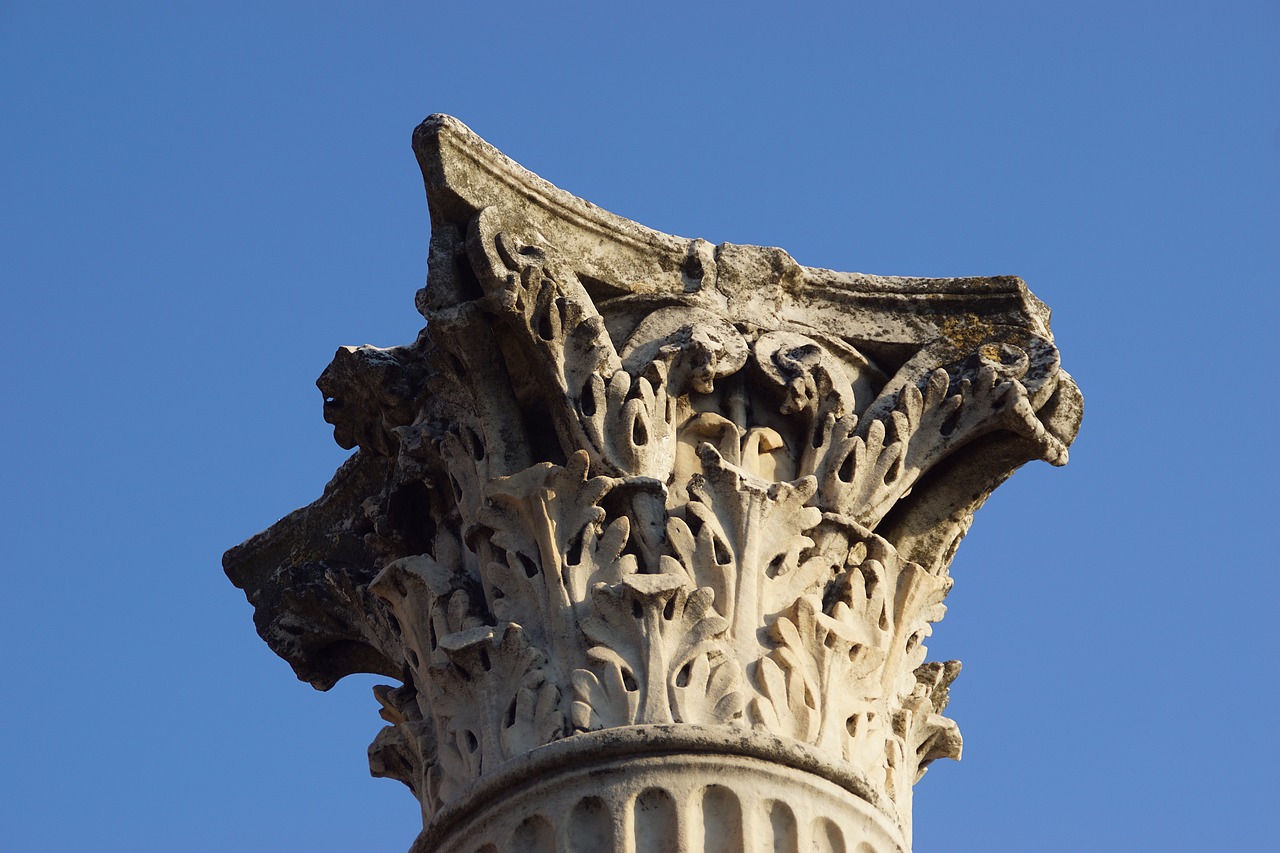
Engaging with Local Guides
When it comes to exploring ancient ruins, engaging with local guides can transform your experience from merely sightseeing into a deep, enriching journey through history. Imagine wandering through the crumbling stone walls of a long-forgotten civilization, each step echoing the stories of those who walked there before you. Local guides possess a treasure trove of knowledge, and their insights can illuminate the significance of the ruins, making your visit more meaningful. Not only do they share fascinating tales about the history and culture of the site, but they also help you navigate the sometimes tricky terrain, ensuring your safety as you explore.
One of the most significant advantages of hiring a local guide is their intimate understanding of the area. They know the safest paths to take and the best times to visit certain spots to avoid crowds. Moreover, they can point out hidden gems that you might miss if you were exploring on your own. Think of them as your personal historians, ready to unveil the mysteries of the past. By engaging with a local guide, you’re not just learning about the ruins; you’re also supporting the local economy and promoting sustainable tourism.
Additionally, local guides can provide context that enriches your understanding of the site. For example, they can explain the architectural styles and the significance of various structures, helping you appreciate the artistry and craftsmanship involved. They often share anecdotes about the local culture, traditions, and even legends that have been passed down through generations. It’s like having a conversation with a living encyclopedia, where every question you ask opens a door to another fascinating story.
However, it’s essential to choose your guide wisely. Look for someone who is not only knowledgeable but also passionate about their work. You can often find guides through local tourism offices or reputable online platforms. Before making a decision, consider asking potential guides about their experience and what they can offer. A good guide will be more than happy to share their background and provide insights into what you can expect during your tour.
In conclusion, engaging with local guides while exploring ancient ruins is not just a matter of convenience; it’s an opportunity to deepen your connection with the past. By understanding the historical and cultural context of the sites you visit, you can create lasting memories that go beyond just taking pictures. So, the next time you plan an adventure into the world of ancient civilizations, remember to seek out a local guide. Their expertise and passion can turn your exploration into an unforgettable experience.
- Why should I hire a local guide for exploring ancient ruins?
Local guides provide valuable insights, ensure your safety, and enhance your understanding of the site's history and culture. - How can I find a reputable local guide?
You can find local guides through tourism offices, online platforms, or by asking for recommendations from fellow travelers. - What should I expect from a guided tour of ancient ruins?
Expect to learn about the site's history, receive safety guidance, and discover hidden spots that you might overlook on your own. - Are local guides knowledgeable about the cultural practices of the area?
Yes, local guides often have deep knowledge of local customs and practices, which can enhance your experience and understanding of the site.
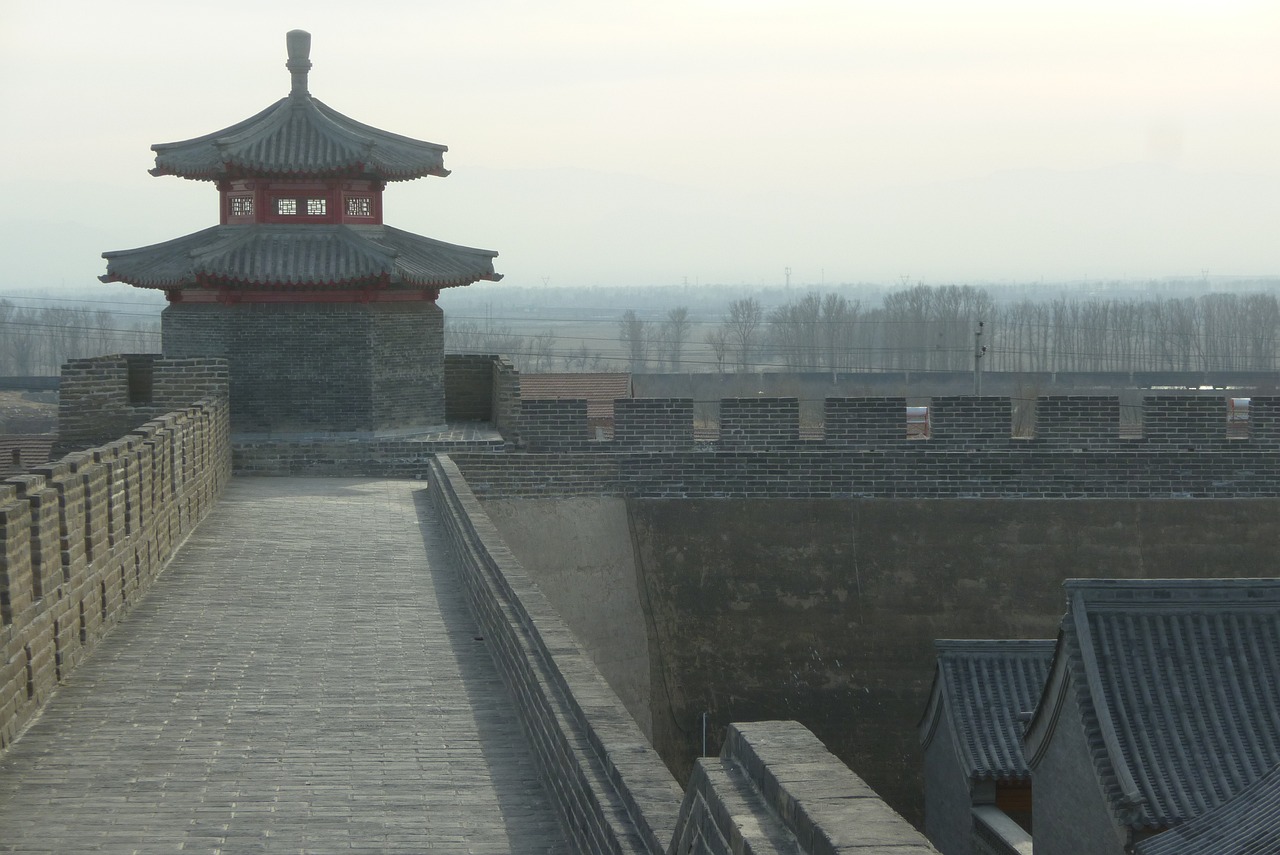
Following Ethical Practices
When you set out to explore ancient ruins, it's not just about the thrill of discovery; it's also about responsibility. Following ethical practices ensures that these magnificent sites can be enjoyed by future generations. Imagine walking through a place that has stood the test of time, feeling the weight of history beneath your feet. It’s a privilege, and with that privilege comes the duty to protect what’s left of these cultural treasures.
One of the most crucial aspects of ethical exploration is to avoid vandalism. This includes not carving your initials into stone, not removing artifacts, and certainly not leaving behind trash. Each piece of history is a story waiting to be told, and damaging it diminishes the experience for everyone. Think of it like a library: would you rip pages out of a book? Of course not! The same principle applies to ancient ruins.
Respecting local customs and practices is another vital part of ethical exploration. Different cultures have unique ways of interacting with their heritage, and being aware of these can enhance your experience. For instance, some sites may have specific rituals or guidelines for visitors. Engaging with these practices not only shows respect but also enriches your understanding of the site. It’s like being invited into someone’s home; you want to be courteous and mindful of their traditions.
Additionally, consider the impact of your visit on the local community. Many ancient sites are located in areas where the economy relies heavily on tourism. By supporting local businesses—like shops, restaurants, and guides—you contribute to the preservation of the site and the well-being of the community. It’s a win-win situation! You get to enjoy authentic experiences, and the locals benefit from your presence.
To summarize, here are a few key ethical practices to keep in mind:
- Avoid Vandalism: Leave no trace; take only memories.
- Respect Local Customs: Engage with and learn from the local culture.
- Support the Local Economy: Choose local guides and businesses whenever possible.
By following these ethical practices, you not only ensure a safer exploration but also contribute to the ongoing preservation of these magnificent sites. Remember, you’re not just a visitor; you’re a steward of history. So, the next time you find yourself wandering through ancient ruins, take a moment to reflect on your role in protecting these treasures for those who come after you.
Q: Why is it important to follow ethical practices when visiting ancient ruins?
A: Following ethical practices helps preserve these sites for future generations, respects local cultures, and ensures that everyone can enjoy these historical treasures.
Q: What should I do if I see someone vandalizing a site?
A: If you feel safe doing so, politely ask them to stop. If that’s not possible, report the incident to local authorities or site management.
Q: How can I support the local economy while visiting ancient ruins?
A: Choose to stay at local accommodations, eat at local restaurants, and hire local guides. This helps ensure that your visit benefits the community.
Q: Are there specific rules I should follow when visiting ancient ruins?
A: Yes, each site may have its own set of guidelines. Always take time to research and follow these rules to ensure your safety and the preservation of the site.
Frequently Asked Questions
- What are the common risks associated with exploring ancient ruins?
Exploring ancient ruins can come with various risks, such as unstable structures, slippery surfaces, and environmental hazards like wildlife. Being aware of these risks allows you to take precautions and enjoy your adventure safely.
- How can I prepare for my visit to ancient ruins?
Preparation is key! Research the history and layout of the ruins, understand local guidelines, and pack essential gear like sturdy footwear and a first-aid kit. This preparation will help you navigate the site safely and enhance your experience.
- Are there specific guidelines I should follow at ancient sites?
Yes! Each site has specific regulations designed to protect both visitors and the ruins. Always follow these guidelines, as they help preserve the historical significance of the site and ensure your safety while exploring.
- How does weather affect my visit to ancient ruins?
Weather can greatly impact your exploration. It's essential to check seasonal changes and potential weather hazards before your visit. Being prepared for the weather conditions will help you stay safe and enjoy your time at the ruins.
- What essential gear should I bring when visiting ancient ruins?
Some essential items include sturdy footwear for uneven terrain, hydration packs to stay hydrated, and a first-aid kit for emergencies. Having the right gear can make your exploration safer and more enjoyable.
- Why is it important to respect cultural heritage while exploring ruins?
Respecting cultural heritage is crucial for preserving these sites for future generations. Understanding local customs and practices not only enhances your experience but also ensures you are a considerate visitor, contributing to the site's preservation.
- How can local guides enhance my experience at ancient ruins?
Hiring local guides can provide you with valuable insights into the history and significance of the ruins. They can also help navigate potentially dangerous areas, making your exploration both safer and more enriching.
- What are some ethical practices I should follow while exploring ancient sites?
Adhering to ethical practices includes avoiding vandalism, respecting local culture, and following site regulations. These practices ensure a responsible exploration experience and help preserve the ruins for future visitors.



















